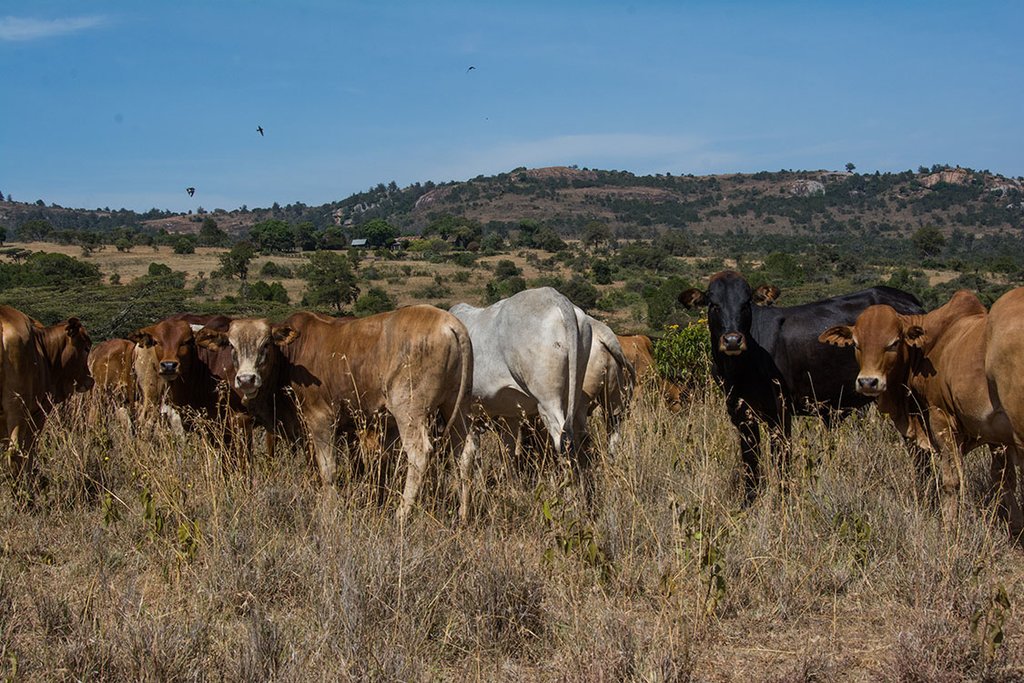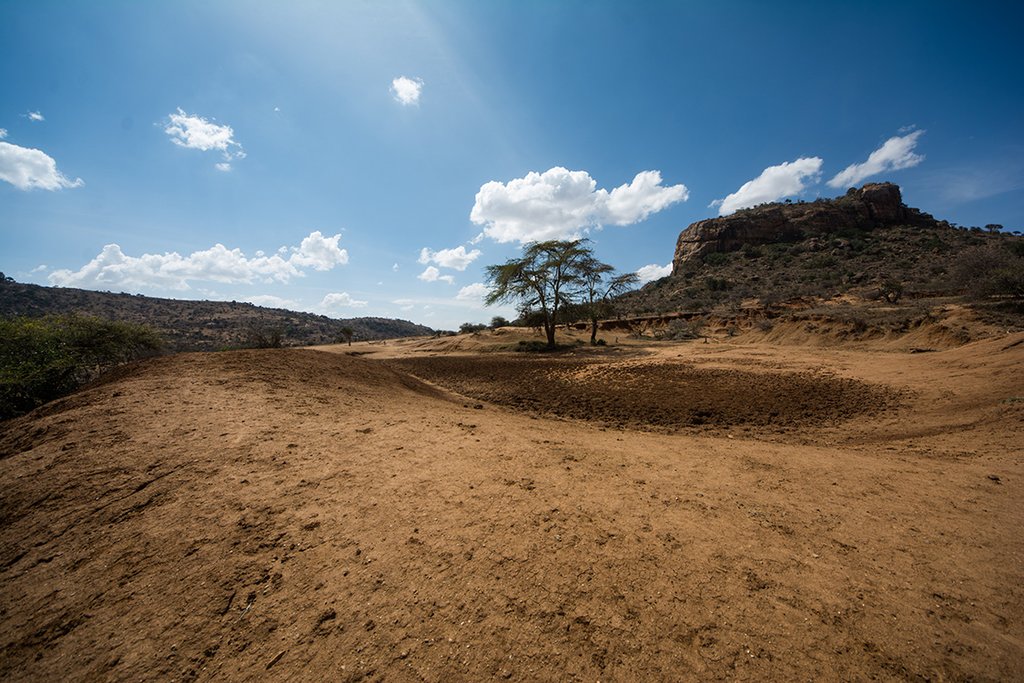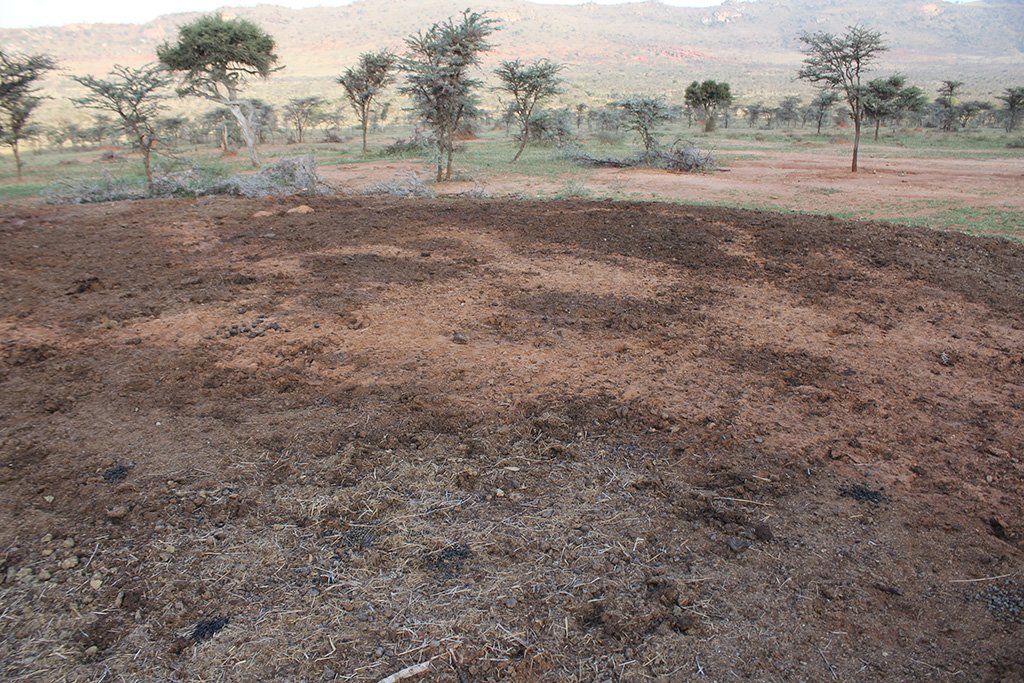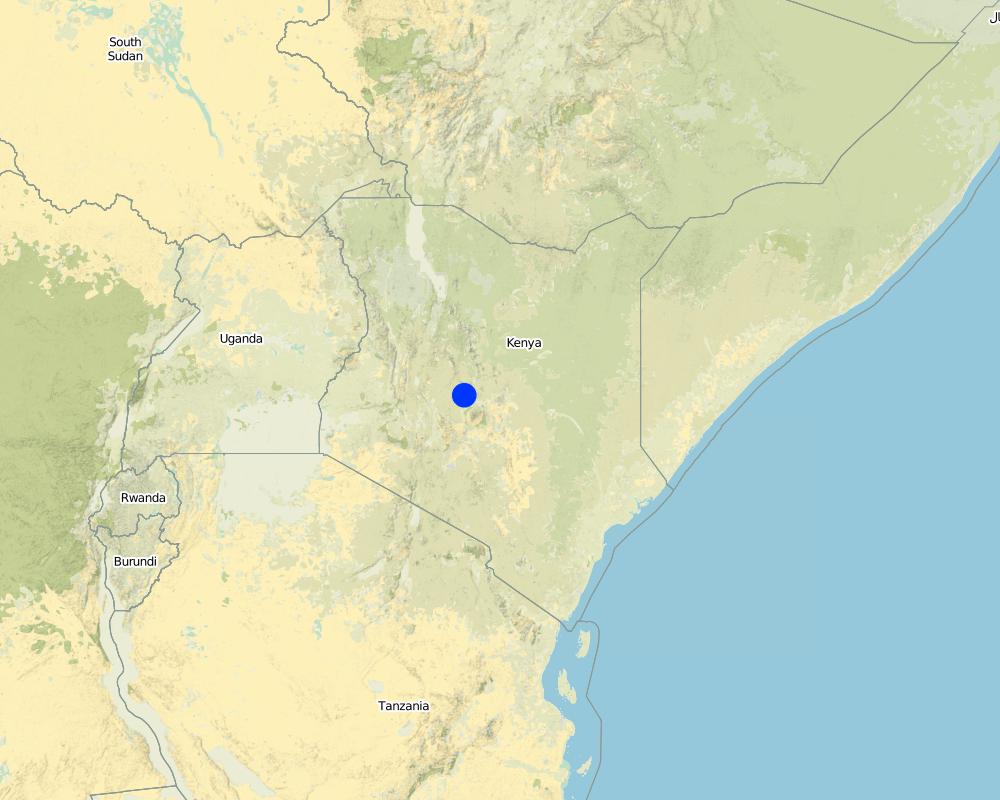Lolldaiga Hills Ranch: Rotational Grazing and Boma-Based Land Reclamation [Kenya]
- Creation:
- Update:
- Compiler: Michael Herger
- Editor: –
- Reviewers: Donia Mühlematter, Hanspeter Liniger, Rima Mekdaschi Studer, Alexandra Gavilano
technologies_2982 - Kenya
- Full summary as PDF
- Full summary as PDF for print
- Full summary in the browser
- Full summary (unformatted)
- Lolldaiga Hills Ranch: Rotational Grazing and Boma-Based Land Reclamation : Sept. 3, 2018 (inactive)
- Lolldaiga Hills Ranch: Rotational Grazing and Boma-Based Land Reclamation: Sept. 4, 2019 (inactive)
- Lolldaiga Hills Ranch: Rotational Grazing and Boma-Based Land Reclamation: Nov. 2, 2021 (public)
- Lolldaiga Hills Ranch: Rotational Grazing and Boma-Based Land Reclamation : Feb. 22, 2018 (inactive)
- Lolldaiga Hills Ranch: Rotational Grazing and Boma-Based Land Reclamation : Feb. 1, 2018 (inactive)
View sections
Expand all Collapse all1. General information
1.2 Contact details of resource persons and institutions involved in the assessment and documentation of the Technology
Key resource person(s)
land user:
Tomlinson Lance
Lolldaiga Hills Ltd.
Kenya
1.3 Conditions regarding the use of data documented through WOCAT
The compiler and key resource person(s) accept the conditions regarding the use of data documented through WOCAT:
Ja
1.4 Declaration on sustainability of the described Technology
Is the Technology described here problematic with regard to land degradation, so that it cannot be declared a sustainable land management technology?
Nee
2. Description of the SLM Technology
2.1 Short description of the Technology
Definition of the Technology:
Lolldaiga Hills ranch is a private ranch and conservancy with livestock production and tourism. Rotational grazing is used to manage livestock on semi-arid lands with limited water resources. Bare land is recovered by a "Boma” technology – strategic corralling of animals overnight on degraded land.
2.2 Detailed description of the Technology
Description:
Livestock production on Lolldaiga Hills ranch is managed under an extensive grazing system for dairy, beef, sheep and camel production, with strategic fattening and selling, in harmony with conservation principles. The conservancy is dedicated to the sustainable conservation of critical habitat and wildlife. The ranch serves also as a training ground for the British Army.
Grazing is managed without fixed blocks. Grazing areas vary considerably, depending on rainfall and location within the farm. Similarly, grazing duration in one area also varies significantly (from two weeks to eight months). Starting after the long rains (April to May), livestock are moved gradually from north to south: movement only occurs when areas are completely grazed. They stay for about four months in the north and eight months in the south - due to better grass in the southern part. Some of the dry season grazing is land set aside for later use. They use, for instance, highland forests in the west where zebra and other livestock are largely absent. During the rains, grazing takes place on a much smaller area than during the dry season, where water can be a major challenge. Livestock are kept together, though steers/heifers/breeding cows/resting bulls are separated into different herds of 90-150 units per herd. But these are not tightly “bunched” as in other ranches in the area which apply “Holistic Management” principles, since bunching is not appropriate due to strong wind erosion. The closer livestock are aggregated, the more damage – that is dust generated - in dry areas. As is typical of private ranches in Laikipia, Lolldaiga supports some of the highest densities of wildlife in Kenya. The wild herbivore biomass density on private ranches is estimated by Georgiadis (2007) at 14 ha /TLU.
Whilst the livestock is moving, large bomas (corrals in Kiswahili) are constructed for the herds. Here, animals are closely together kept in protective enclosures overnight. Bomas are strategically sited on bare areas to recover the land through dung accumulation and breaking soil crusts by hooves. Currently, there are 20 bomas covering an area of 0.02 km2 (0.01% of their land). This can be taken to represent the area that can be restored each year. Boma sites are steadily but slightly shifted. On average, one boma is located on the same denuded patch for only one to two weeks during the dry season, and again for one week during the wet season.
In a single boma of 0.1 ha, 400 cows are corralled. Former bare patches with bomas have recovered well after just a few years. Results of a boma site comparison (see Herger 2018) have shown how bomas turn into ecological hotspots with a long-lasting effect. Amounts of soil organic carbon (SOC), as well as macro- and micronutrients in topsoil (especially) and subsoil of former boma sites were much higher than reference sites close-by. The chronology of former boma sites (1, 5, 9 years ago) also played a decisive role in soil parameters. Former boma sites from 5 and 9 years ago performed better than the most recent boma (1 year ago).
On the ranch, due to lack of rains, fodder supplements had to be purchased in 2016. However, it is usually water and not grazing that is the limiting factor on the rangeland.
Whereas cattle are sold to the leading meat producer "Farmer's Choice" (80% for domestic distribution, 20% for export to neighbouring countries and the Middle East), sheep are sold to East African Seafood (Nairobi) and camels to Somalis in town and local butcheries.
Lolldaiga also assists community grazing. The ranch helps neighbouring group ranches by allowing them access to their land for fattening purposes, but mostly as a grass bank during droughts (sometimes charging a small fee, sometimes none). During dry spells, they host on average 500-1000 heads from other communities. Along their fence informal (strictly "illegal") grazing of goats and sheep is tolerated.
2.3 Photos of the Technology
2.5 Country/ region/ locations where the Technology has been applied and which are covered by this assessment
Country:
Kenya
Region/ State/ Province:
Laikipia
Specify the spread of the Technology:
- evenly spread over an area
If the Technology is evenly spread over an area, specify area covered (in km2):
200.0
If precise area is not known, indicate approximate area covered:
- 100-1,000 km2
Comments:
Lolldaiga has an area size of 200 km2. Similar technologies are also applied on other ranches (see the documentations for "Il Ngwesi", "Makurian", and "Borana")
Map
×2.6 Date of implementation
If precise year is not known, indicate approximate date:
- 10-50 years ago
2.7 Introduction of the Technology
Specify how the Technology was introduced:
- through land users' innovation
3. Classification of the SLM Technology
3.1 Main purpose(s) of the Technology
- improve production
- reduce, prevent, restore land degradation
- conserve ecosystem
- preserve/ improve biodiversity
3.2 Current land use type(s) where the Technology is applied

Grazing land
Extensive grazing:
- Ranching
Animal type:
- camels
- sheep
- cattle
Products and services:
- meat
- milk
- whool
Species:
sheep
Count:
1800
Species:
camels
Count:
140

Settlements, infrastructure
- Settlements, buildings
Remarks:
Few facilities for tourism.
Few farm houses.
Comments:
Grassed acacia bushland. Overall rather good vegetation coverage with some patches of bare ground. Especially in the northern part Lolldaiga is effected by the invasive species "Opuntia stricta". Dominant grasses: Pennisetum species, Eragrostis species, Cynadon species, Hyparrhenia species, Kelenger species. Dominant shrubs: Solyneum inconum, Lyceum europaeum, Barleria acuthodies, Grewia tembensis, Opuntia. Dominant trees: Acacia etbaica, Acacia drepanalobium, Acacia mellifera. Detailed list of all species (vegetation and wildlife) available (Herger 2018)
Main animal species and products: Cattle, sheep, camels; Milk, wool, beef, camel meat, and lamb/ mutton. High-quality segment. Domestic (80%, Nairobi and hotels), international distribution (20%, neighbouring countries and the Middle East) Livestock: 3,920 TLU; Stocking rate: 5.1 ha/TLU Pressure on land including wildlife numbers (estimated by Georgiadis 2007): 3.7 ha/TLU Livestock numbers: 5,200 cattle, 1,800 sheep, 140 camels Sales: Cattle 20% sales, Sheep 15%, Camels 10%. Additional 1,000-2,000 livestock units from neighbouring community farms during droughts. Goats and sheep illegally grazing along the fence are tolerated. Wildlife: Giraffe, antelope/gazelle (e.g. gerenuk, impala, Thomson's gazelle), baboons, zebra, dikdik, hares, elephant and others. More wildlife than on group ranches. Wildlife herbivore biomass density (Georgiadis 2007) 14 ha/TLU
Number of growing seasons per year: 2
Short rains in November and December. Long rains in April and May. Rains from (October) November to December are usually better in this area. Rainfalls with strong local variations and changing regimes.
Livestock density: 3'920 TLU; Stocking rate: 5.1 ha/TLU, Pressure on land including wildlife numbers (estimated by Georgiadis 2007): 3.7 ha/TLU
3.4 Water supply
Water supply for the land on which the Technology is applied:
- rainfed
3.5 SLM group to which the Technology belongs
- pastoralism and grazing land management
- improved ground/ vegetation cover
3.6 SLM measures comprising the Technology

management measures
- M2: Change of management/ intensity level
- M4: Major change in timing of activities
3.7 Main types of land degradation addressed by the Technology

soil erosion by water
- Wt: loss of topsoil/ surface erosion
- Wg: gully erosion/ gullying

soil erosion by wind
- Et: loss of topsoil

physical soil deterioration
- Pc: compaction
- Pk: slaking and crusting
- Pi: soil sealing

biological degradation
- Bc: reduction of vegetation cover
- Bh: loss of habitats
- Bq: quantity/ biomass decline
- Bs: quality and species composition/ diversity decline
- Bl: loss of soil life
Comments:
Across the grasslands and rangelands, an increase in bare land and bush has been a clear trend all over Laikipia for many years, both on community-owned lands and private ranches. Major identified ecological problems (partly) caused by livestock production are: bare ground, low contents of soil organic carbon and plant-available nutrients, soil erosion (sealing, crusting, rills and gullies, water flow patterns, sheet erosion, pedestals), poor soil properties, undesirable species, and (increasing) woody and invasive species. The current major problem on rangelands is the invasive species Opuntia stricta, which however only could spread that widely because of degraded land in the first place. The technology aims at improving vegetation cover of the land and thereby reducing further degradation and restoring degraded land. However, Lolldaiga is clearly not as much affected by degradation (compare Herger 2018).
3.8 Prevention, reduction, or restoration of land degradation
Specify the goal of the Technology with regard to land degradation:
- reduce land degradation
- restore/ rehabilitate severely degraded land
4. Technical specifications, implementation activities, inputs, and costs
4.1 Technical drawing of the Technology
4.2 General information regarding the calculation of inputs and costs
Specify how costs and inputs were calculated:
- per Technology unit
Specify unit:
Only livestock production related: Herders, animals treatment
Specify currency used for cost calculations:
- USD
Indicate average wage cost of hired labour per day:
4.5
4.5 Maintenance/ recurrent activities
| Activity | Timing/ frequency | |
|---|---|---|
| 1. | Herders, supervisors, watchmen etc | |
| 2. | Animal treatments (vaccination, spraying, injections) |
4.6 Costs and inputs needed for maintenance/ recurrent activities (per year)
| Specify input | Unit | Quantity | Costs per Unit | Total costs per input | % of costs borne by land users | |
|---|---|---|---|---|---|---|
| Labour | Herders/employees | Person*days | 36000.0 | 4.5 | 162000.0 | |
| Other | Animals treatments | Per TLU | 3920.0 | 11.0 | 43120.0 | |
| Total costs for maintenance of the Technology | 205120.0 | |||||
| Total costs for maintenance of the Technology in USD | 205120.0 | |||||
Comments:
Animal treatment costs are estimated according to other ranches in the area since figures for Lolldaiga are missing. Figures are not reconfirmed data.
4.7 Most important factors affecting the costs
Describe the most determinate factors affecting the costs:
Labor
5. Natural and human environment
5.1 Climate
Annual rainfall
- < 250 mm
- 251-500 mm
- 501-750 mm
- 751-1,000 mm
- 1,001-1,500 mm
- 1,501-2,000 mm
- 2,001-3,000 mm
- 3,001-4,000 mm
- > 4,000 mm
Specify average annual rainfall (if known), in mm:
376.00
Specifications/ comments on rainfall:
Rainfall gauge Lolldaiga Northern gauge average from 2013-2016. Strong local (and temporal) variation, changing rainfall regimes.
Indicate the name of the reference meteorological station considered:
Rainfall gauge Lolldaiga Northern Gate
Agro-climatic zone
- semi-arid
5.2 Topography
Slopes on average:
- flat (0-2%)
- gentle (3-5%)
- moderate (6-10%)
- rolling (11-15%)
- hilly (16-30%)
- steep (31-60%)
- very steep (>60%)
Landforms:
- plateau/plains
- ridges
- mountain slopes
- hill slopes
- footslopes
- valley floors
Altitudinal zone:
- 0-100 m a.s.l.
- 101-500 m a.s.l.
- 501-1,000 m a.s.l.
- 1,001-1,500 m a.s.l.
- 1,501-2,000 m a.s.l.
- 2,001-2,500 m a.s.l.
- 2,501-3,000 m a.s.l.
- 3,001-4,000 m a.s.l.
- > 4,000 m a.s.l.
5.3 Soils
Soil depth on average:
- very shallow (0-20 cm)
- shallow (21-50 cm)
- moderately deep (51-80 cm)
- deep (81-120 cm)
- very deep (> 120 cm)
Soil texture (topsoil):
- coarse/ light (sandy)
- medium (loamy, silty)
Soil texture (> 20 cm below surface):
- coarse/ light (sandy)
- medium (loamy, silty)
Topsoil organic matter:
- medium (1-3%)
If available, attach full soil description or specify the available information, e.g. soil type, soil PH/ acidity, Cation Exchange Capacity, nitrogen, salinity etc.
SOC 0.9-1.8 %
pH: 6.3
Clay: 9 %
Silt: 47 %
Sand: 44 %
More rangeland health data in Herger (2018)
5.4 Water availability and quality
Availability of surface water:
medium
Water quality (untreated):
poor drinking water (treatment required)
Is water salinity a problem?
Nee
Is flooding of the area occurring?
Nee
5.5 Biodiversity
Species diversity:
- high
Habitat diversity:
- high
Comments and further specifications on biodiversity:
Grassed acacia bushland. Overall rather good vegetation coverage with some patches of bare ground. Especially in the northern part Lolldaiga is effected by the invasive species "Opuntia stricta". Dominant grasses: Pennisetum species, Eragrostis species, Cynadon species, Hyparrhenia species, Kelenger species. Dominant shrubs: Solyneum inconum, Lyceum europaeum, Barleria acuthodies, Grewia tembensis, Opuntia. Dominant trees: Acacia etbaica, Acacia drepanalobium, Acacia mellifera. Detailed list of all species (vegetation and wildlife) available (Herger 2018)
5.6 Characteristics of land users applying the Technology
Sedentary or nomadic:
- Sedentary
Market orientation of production system:
- commercial/ market
Off-farm income:
- 10-50% of all income
Relative level of wealth:
- very rich
Individuals or groups:
- individual/ household
Level of mechanization:
- manual work
Gender:
- men
Age of land users:
- middle-aged
5.7 Average area of land used by land users applying the Technology
- < 0.5 ha
- 0.5-1 ha
- 1-2 ha
- 2-5 ha
- 5-15 ha
- 15-50 ha
- 50-100 ha
- 100-500 ha
- 500-1,000 ha
- 1,000-10,000 ha
- > 10,000 ha
Is this considered small-, medium- or large-scale (referring to local context)?
- large-scale
5.8 Land ownership, land use rights, and water use rights
Land ownership:
- individual, titled
Land use rights:
- individual
Water use rights:
- individual
Comments:
Masai in the area have claimed that land leases of white settlers have expired and the land belongs to them. Government states the land belongs to the private ranchers, but the future development is unknown. There have already been conflicts and are likely to happen again. On the other hand, cooperation with group ranches has increased.
5.9 Access to services and infrastructure
health:
- poor
- moderate
- good
education:
- poor
- moderate
- good
technical assistance:
- poor
- moderate
- good
employment (e.g. off-farm):
- poor
- moderate
- good
markets:
- poor
- moderate
- good
energy:
- poor
- moderate
- good
roads and transport:
- poor
- moderate
- good
drinking water and sanitation:
- poor
- moderate
- good
financial services:
- poor
- moderate
- good
6. Impacts and concluding statements
6.5 Adoption of the Technology
- single cases/ experimental
If available, quantify (no. of households and/ or area covered):
Similar practices, but different. Most ranches implement Holistic Management.
6.6 Adaptation
Has the Technology been modified recently to adapt to changing conditions?
Nee
6.7 Strengths/ advantages/ opportunities of the Technology
| Strengths/ advantages/ opportunities in the land user’s view |
|---|
| Ability to allow the land to recover. |
| Drought resilience. |
| Strengths/ advantages/ opportunities in the compiler’s or other key resource person’s view |
|---|
| The listed advantages from Lance Tomlinson, the land user, are shared by the compiler's view. Lolldaiga has moderate stocking rates and good management, resulting in an overall fairly good condition of the rangeland. However, there are some bare patches, invasive species, and erosion features, also because of the influence of the neighbouring group ranch “Makurian”. |
7. References and links
7.1 Methods/ sources of information
- field visits, field surveys
6 field visits with included "rangeland health assessment" in different parts of Lolldaiga where I could see the condition of the land as well as several other visits of the area.
- interviews with land users
Meetings with the grazing manager, general manager, owner of the ranch as well as with two resource people involved in the Lolldaiga Research programme.
- interviews with SLM specialists/ experts
Truman Young
Dan Rubenstein
Dino Martins
John Letai
Samali Letai
Peter Hetz
Dominic Maringa
Joseph Putunoi
Patrick Ekodere
- compilation from reports and other existing documentation
Herger (2018)
Scientific papers, LWF reports etc.
When were the data compiled (in the field)?
22/01/2017
7.2 References to available publications
Title, author, year, ISBN:
Herger, M.B. (2018). Environmental Impacts of Red Meat Production. MSc Thesis. University of Bern.
Available from where? Costs?
University of Bern
Title, author, year, ISBN:
Georgiadis, N.J., Olivero, I.N., Romanach, S.S. (2007). Savanna herbivore dynamics in a livestock-dominated landscape: I. Dependence on land use, rainfall, density, and time. Biology Conservation 137(3): 461-472.
Available from where? Costs?
Online
Links and modules
Expand all Collapse allLinks
No links
Modules
No modules








